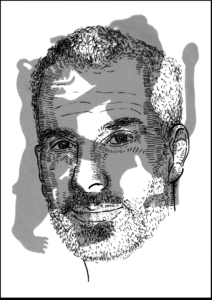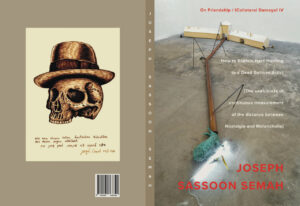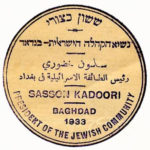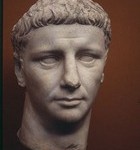On Friendship / (Collateral Damage) V – Between Graveyard And Museum’s Sphere
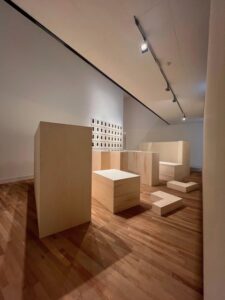 On Friendship / (Collateral Damage) V – Between Graveyard and Museum’s Sphere
On Friendship / (Collateral Damage) V – Between Graveyard and Museum’s Sphere
Het Nieuwe Domein, Ligne 5, Sittard – 3.2.2024-30-6.2024
At first glance, a cemetery and a museum seem to have little in common. Yet they both give meaning to the artworks Joseph Sassoon Semah presents in the exhibition.
He takes the visitor on a wonderful journey of exploration from King Solomon’s Temple in Jerusalem, through Baghdad’s lost public space, the waiting room of his grandfather Sassoon Kadoori (1886-1971), the chief rabbi of Baghdad, and the Auschwitz-Birkenau extermination camp, to spatial architecture based on the Talmud Bavli.
Performance
Joseph Sassoon Semah, Peter Baren, Masja Austen, Emile Schrijver, Ulco Mes, Theresie Tholen, Aletha Steijns, Jom Semah
Camera & Editing: Bob Schoo. www.n-p-n.info
Bijeenkomst & boekpresentatie: Joseph Beuys en de naoorlogse (kunst)geschiedenis: Een ander perspectief.
Metropool Internationale Kunstprojecten en Duitsland Instituut Amsterdam
Spui25, 5 oktober 2023
https://spui25.nl/programma/beuys-en-de-naoorlogse-kunstgeschiedenis-een-ander-perspectief
Joseph Beuys en de naoorlogse (kunst)geschiedenis: Een ander perspectief’.
Met: Felix Rottenberg (moderator), Joseph Sassoon Semah, Linda Bouws (curator), Gregor M. Langfeld (hoogleraar Kunstgeschiedenis, Cultureel Erfgoed en Identiteit), Bas Marteijn (Chief Country Officer Netherlands van Deutsche Bank) en Emile Schrijver (algemeen directeur van het Joods Cultureel Kwartier in Amsterdam).
Wat is de betekenis van Joseph Beuys in de context van de naoorlogse westerse kunst?
In de reeks tentoonstellingen, debatten en performances in On Friendship / (Collateral Damage) IV – How to Explain Hare Hunting to a Dead German Artist [The usefulness of continuous measurement of the distance between Nostalgia and Melancholia], (september 2021-februari 2023) hebben Joseph Sassoon Semah en curator Linda Bouws het publiek geïnformeerd over de ontbrekende informatie over Joseph Beuys en de naoorlogse West-Duitse kunstgeschiedenis en -politiek. Een nieuw en conceptueel perspectief op Beuys vereist een bredere discussie in de kunstwereld.
Inleiding: Gregor M. Langfeld
Na WWII kwam het tot een radicale breuk in de kunstopvattingen waarbij de nationaalsocialistische dichotomie tussen ‘nazikunst’ en ‘entartete’ kunst als het ware is voortgezet maar de waardering voor beide simpelweg werd omgedraaid. Door deze zwart-witvisie zijn bepaalde kunstvormen en kunstenaars nog altijd merkwaardig taboe of juist gecanoniseerd. Deze prestentatie sluit aan bij Joseph Sassoon Semah’s kritische reflecties over de mythen en stereotiepe voorstellingen over modernistische kunst die men na de oorlog heeft gecreëerd. Het blijkt dat het nationaalsocialisme tot op de dag van vandaag in de kunstwereld doorwerkt.
In Berlin, Mizrahi Activists Face An Identity Conflict Over Judicial Protests
With Netanyahu’s visit to Germany, Mati Shemoelof struggles to reconcile the Mizrahi Jews’ struggle for a political voice with their role in the rise of the ultra-religious Right.
In January, I received an email from a group of Mizrahi activists in Israel. The Netanyahu government was about to forge ahead with its judicial “reforms” and the email outlined a new Initiative: A Mizrahi-civil collective regarding the public agenda of the new government.
I knew most of the activists from our mutual activism activities in Israel, from social justice and questions of multiculturalism to the growing social gaps in Israel. The invitation to join this new collective prompted a major dilemma for me.
I had started following Israeli news almost obsessively. The new voices of protest and the hundreds of thousands of Israelis protesting every weekend in the big cities had me glued me to the internet.
However, I also felt reassured that I had made the right move by leaving that place, that I had put the correct geographical distance between me and this extreme right-wing government. But could I just sit and do nothing? Even worse, hardly anyone I knew in Germany, a country loaded with Ashkenazi history, could understand my dilemma.
And then Natan Sznaider, an academic and writer who was born in Germany and moved to Israel when he was 20, wrote an article in the German newspaper die Tazabout the struggle in Israel as one between the Mizrahi and the Ashkenazi Jews. Ok, I thought.
So, I read the policy papers of the collective and tried to understand from afar. Now, I want to spread the messages of the Mizrahi Left and challenge the idea that there are two camps here in Berlin fighting each other.
I edit texts and try to contribute as much as I can to help the collective. But the truth is it’s hard for me to contribute much. I am no longer informed like I once was. Then I tell myself that’s just an excuse. So, two weeks ago the collective took to social media and in Hebrew and Arabic put out an open call for worried citizens to join the collective.
We sent our policy paper to politicians and the media and shared it on different channels. We got more than 1853 signatures.
Then we began working with groups of activists in different fields: democracy and protest, education system, culture and media, social justice, housing, public space, transportation and gender and LGTBQ+ rights. And as distant as I am, it is important to me to create a distinct Mizrahi voice in the Israeli media.
Benjamin Netanyahu is using his Mizrahi ministers to undermine the accomplishments of the Mizrahi democratic struggle. For example, he’s cancelled the public housing law that helped lower-income families, which is bound to worsen the ongoing and systematic harm inflicted upon marginalised and mostly Mizrahi populations in Israel.
But there is more to my dilemma, as I learned during my online activism. Some of the opposition discourse on Netanyahu’s rule contains racist elements. People on the Left who do not know Mizrahi history are blaming the Mizrahi people for this judicial reform; they don’t know how the Mizrahi Left contributed to social justice, democracy, and other important issues.
They also use stereotypes and racism when they criticise Mizrahi ministers and forget that our democratic struggle should be clean from racism.
On the Right there is also a scary process, a steady co-option by right-wing pundits and politicians of the discursive fruits of the Mizrahi struggle. Our collective demands for representation, described as “the second Israel” or “periphery and centre,” have turned the discussion over recognition and rights into a confrontation wherein ignorance of Mizrahi history and culture has increased and the profound problems of the present have been silenced.
These right-wing politicians have never participated in the struggles for equality in education, the equitable re-drawing of local council jurisdictions, the expansion of public housing, the prevention of evictions, and the struggle against forced removals of Mizrahi residents of neighbourhoods such as Kfar Shalem, Givat Amal, Abu Kabir, and HaArgazim.
The Mizrahi collective has three main aims: First, we will not be silenced, we will criticise the policies of this government and we will not attempt to silence “the other” within Israeli society.
Second, we will bring our Mizrahi activism to the public to remind Israelis what we gained with former struggles and what we intend to do.
Third, we will use social media to reach out to a younger audience.
This is another moment of important Mizrahi intellectual resistance. We have requested meetings with politicians, we have published a legal paper and sent it to President Herzog with a request for a meeting.
It has also been sent to both the chairman of the Knesset’s Constitution, Law and Justice Committee and the Minister of Justice with a demand to stop judicial proceedings, and to adopt the position paper.
This Mizrahi activism empowered me to stand and argue my special point of view, even here in the weekly protests at the Brandenburg Gate, where most of the protesters are Ashkenazim. Now, I am protesting with them against the coup, while continuing to argue for the long history of Mizrahi struggle, a sharp stance of a Mizrahi Left.
Mati Shemoelof is a poet and an author. His writing includes seven poetry books, plays, articles and fiction, which have won significant recognition and prizes. He has written a radio play for German radio WDR. A German edition of his bi-lingual poems was published by AphorismA Verlag.
Joseph Sassoon Semah: On Friendship / (Collateral Damage) IV – How to Explain Hare Hunting to a Dead German Artist
The richly illustrated publication:
Joseph Sassoon Semah: On Friendship / (Collateral Damage) IV – How to Explain Hare Hunting to a Dead German Artist [The usefulness of continuous measurement of the distance between Nostalgia and Melancholia] will be published in March 2023 on Joseph Beuys and post-war West German art history.
Published by Metropool Internationale Kunstprojecten, final editing: Linda Bouws & Joseph Sassoon Semah, design + layout: kunstburo geert schriever, A4, 208 pages, full colour – ISBN 9789090368399
The publication can now be ordered € 49.95 and € 5 shipping costs: Stichting Metropool Internationale Kunstprojecten, account number NL 42 INGB 0006 9281 68 stating On Friendship IV, name and address.
With contributions from
Joseph Sassoon Semah, Linda Bouws (curator), David de Boer (general practitioner and gallery owner), Albert Groot (psychiatrist), Paul Groot (art historian) Arie Hartog (director Gerhard-Marcks-Haus, Bremen), Bas Marteijn (Chief Country Officer Deutsche Bank Netherlands), Eelco Mes (curator), Markus Netterscheidt (artist), Ton Nijhuis (director Duitsland Instituut/UvA), Hans Peter Riegel (author of the four-volume biography Beuys, Die Biographie), Mati Shemoelof (author), Rick Vercauteren (former director Museum Bommel van Dam, publicist and historian), Andreas Wöhle (President Evangelical Lutheran Synod in the Protestant Church).
Brief description
The publication highlights Beuys’ work and thought from different perspectives and his relationship to post-war culture and politics in particular.
Joseph Sassoon Semah’s (1948, Baghdad) work – drawings, paintings, sculptures, installations, performances and texts – provides ample space for critical reflection on identity, history and tradition and is part of the artist’s long research into the relationship between Judaism and Christianity as sources of Western art and culture and of politics.
Joseph Beuys (1921, Krefeld -1986, Düsseldorf) is one of Germany’s most influential post-war artists, who became particularly famous for his performances, installations, lectures and Fluxus concerts. In 2021/22, Joseph Beuys’ 100th birthday was celebrated extensively with the event ‘Beuys 2021. 100 years’.
But who was Beuys really? Joseph Beuys mythologised his wartime past as a national socialist and Germany’s problematic and post-traumatic past. After WWII, Beuys transformed from perpetrator to victim. How should we interpret Beuys in the future?
Joseph Beuys and Joseph Sassoon Semah, two ex-soldiers, two artists. Joseph Beuys was a former gunner and radio operator in the German air force during WWII; Joseph Sassoon Semah served in the Israeli air force. Who is the (authentic) victim and who is the Victimiser?
Performance Joseph Sassoon Semah with Friends – Display of the WOUND
On Friendship / (Collateral Damage) IV
How to Explain Hare Hunting to a Dead German Artist[The usefulness of continuous measurement of the distance between Nostalgia and Melancholia]
(September 2021 – February 2023)
Display of the WOUND
Performance Joseph Sassoon Semah with Friends
Baruch Abraham
Masja Austen
Jom Semah
General Practitioner David de Boer
Balthasar Floriszstraat 23
1071 VA Amsterdam
July 10, 2022
A critical project concerning post-war artist Joseph Beuys
Created by Joseph Sassoon Semah, curator Linda Bouws
Camera & editing: Bob Schoo, www.n-p-n.info
© Stichting Metropool Internationale Kunstprojecten 2023
Arie Hartog – Reading Joseph Beuys after Joseph Sassoon Semah
On Friendship / (Collateral Damage) IV -How to Explain Hare Hunting to a Dead German Artist
[The usefulness of continuous measurement of the distance between Nostalgia and Melancholia]
A critical project concerning post-war artist Joseph Beuys
(September 2021 – February 2023)
Lecture: Dr. Arie Hartog, director Gerhard-Marcks-Haus, Bremen – Reading Joseph Beuys after Joseph Sassoon Semah
Deutsche Bank Netherlands,
De entree 195, Amsterdam
May 24, 2022
In the Dutch branch of the Deutsche Bank in Amsterdam, an exhibition was set up on two floors – from May 24 to September 24, 2022.
The exhibition was opened by Bas Marteijn, Chief Country Officer of Deutsche Bank Netherlands.
Created by Joseph Sassoon Semah, curator Linda Bouws
Camera & editing: Bob Schoo, www.n-p-n.info
© Stichting Metropool Internationale Kunstprojecten 2023
